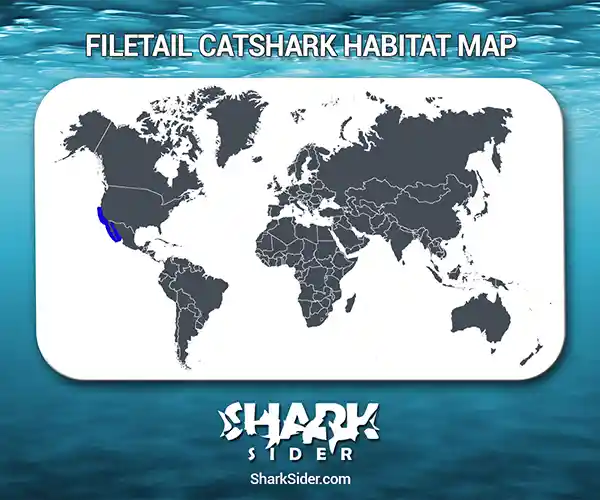The filetail catshark is a deep-sea species of catshark endemic to the eastern Pacific. It gets its name from the tooth-like projections on the upper part of its caudal fin.
Filetail Catshark Scientific Classification |
|
| Kingdom | Animalia |
| Phylum | Chordata |
| Class | Chondrichthyes |
| Order | Carcharhiniformes |
| Family | Proscylliidae |
| Genus | Parmaturus |
| Scientific Name | P. xaniurus |
Description
The maximum size of these sharks is 17.7 inches for males and 21.7 inches for females. These sharks have small, squishy bodies, with short snouts that have broad, triangular nasal flaps and oval, elongated eyes with ridges underneath them. The five gills are located between the eyes and the pectoral fins on both sides of the shark’s body.
Filetail catsharks have small pectoral fins and an asymmetrical caudal fin with a larger upper lobe. Both dorsal fins are of similar size, with the second one located opposite the anal fin.
Inside the shark’s mouth are rows of tiny teeth with multiple points.
These sharks are greyish-brown when seen from above while much lighter when seen from below.
Where do they live
Map Of The Filetail Catshark’s Habitat

Filetail catsharks have a minimal distribution in the eastern Pacific Ocean, from the California coast in the US to the Gulf of California in Mexico.
They live close to the bottom of the ocean floor at depths ranging from 300 to 4105 ft in temperate or sub-tropical waters. These sharks are often spotted near the muddy bottoms of the outer continental shelf and upper slope.
Behavior
Feeding
Their diet consists of crustaceans, mollusks, and small bony fish like lanternfish.
Reproductive
These catsharks are oviparous, laying egg cases annually, with an increase in July through September. At birth, the newly hatched sharks are about 2.8-3.5 inches long.
Sexual maturity is observed in males when they are about 14.7-16.7 inches long and in females when they are 16.7-18.7 inches long.
Adaptations
Like several bottom-dwelling species, they also have spiracles to breathe when they are close to the ocean floor, feeding or resting. The gill region of this catshark is enlarged to enable it to survive in areas with low oxygen levels.
The high squalene content in the shark’s liver allows it to remain buoyant.
Interactions with humans
As a deep sea species of small size, this catshark is harmless to humans. While the shark is sometimes caught as bycatch, it isn’t a primary target for fisheries. As a result, the IUCN classified the filetail catshark as “Least Concern” or “LC”.
